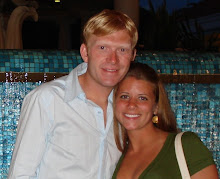Rwanda is a breathtakingly beautiful country covered by lush vegetation, hills a
 nd volcanoes. There are over 8 million people in a very small country and every inch of land and hillside is cultivated, making it look somewhat like Nepal. Kigali city center sits on top of a hill, with magnificent views over the outlying areas. We caught a moto-taxi to a couple different guest houses before deciding on one in the city center, we think we were their only guests.
nd volcanoes. There are over 8 million people in a very small country and every inch of land and hillside is cultivated, making it look somewhat like Nepal. Kigali city center sits on top of a hill, with magnificent views over the outlying areas. We caught a moto-taxi to a couple different guest houses before deciding on one in the city center, we think we were their only guests.The next morning we headed out to explore the city. Our first priority was to visit the Kigali Genocide Memorial Center situated on the outskirts of town. Again we were not sure what to expect...would it be similar to the WWII death camp memorials or the killing fields of Cambodia? Our nervousness and uneasiness was somewhat calmed as we arrived at the site and found it to be a serene white building surrounded by a garden and a simple fountain. Nerves calmed, we passed through security (Chad felt kind of dumb as he had brought his pocket knife on him) and entered the building. Immediately we were greeted by memorial representatives speaking in a very low tone with almost no expression on their face. We knew this was a sensitive and sacred site and the actions of the workers further emphasized these thoughts.
The first section of the museum covered the history of Rwanda and the events leading up to the genocide; the Belgian colonization and the subsequent socioeconomic (not ethnic) classification of all citizens into the Hutu or Tutsi class (initially based off of how many cows one owned) and the eventual build up of tension and colonial favoritism of first the minority Tutsi then the majority Hutu. Belgium slowly lost grip and Rwanda gained independence in the 1960s. The tension flowed over into the new country in subsequent years leading to the eventual genocide of the Tutsi in 1994.
The second and most disturbing and emotional section of the museum dealt with the genocide itself. Following the gunning down of a plane carrying the plane of the Rwanda and Burundi presidents, road blocks we set up within hours and the genocide was set into motion. No one knows who exactly shot down the plane, many thing it was the presidents own people in order to set off the genocide. The aftermath that followed was so swift and sickly efficient that no one can claim that it was not premeditated and well thought out. Tutsi were slaughtered. At road intersections, schools, churches and in their own homes. They were thrown in latrines and septic tanks and stoned to death. The actions were carried out by a branch of the Rwanda military, neighbors, friends and children. The killers did not differentiate between men, women, children or infants. The chosen mode of death seemed to be the machete to the head or by stoning. This section of the museum was particularly difficult with still pictures and videos depicting the events. When it was all over, over 1 million people were dead in 100 days. It was difficult to imagine 10,000 people being murdered by their own every day for 100 days. We were left dead minded.
The final section of the memorial covered a history of genocides in other parts of the world. As we excited the building we entered the gardens which were homes to mass graves of over 250,000 people who lost their lives during the genocide.
Our time in Rwanda was moving and weighed heavily on our minds. Visible signs of the genocide still exist today, 15 years later. Walking around town we saw multiple people missing limbs and in wheelchairs. Construction and modernization around the city and country is booming though, and the people are filled with hope and optimism and are focused on the future. Our stay was short in Rwanda, only 3 days but it’s impact will stay with us forever.


3 comments:
Wow. Powerful to say the least.
Hey guys! it's colleen's cousin katie, really enjoying ur posts, this last one was extra powerful. looking forward to the next update. stay safe and much love from back here in chicago!
Post a Comment